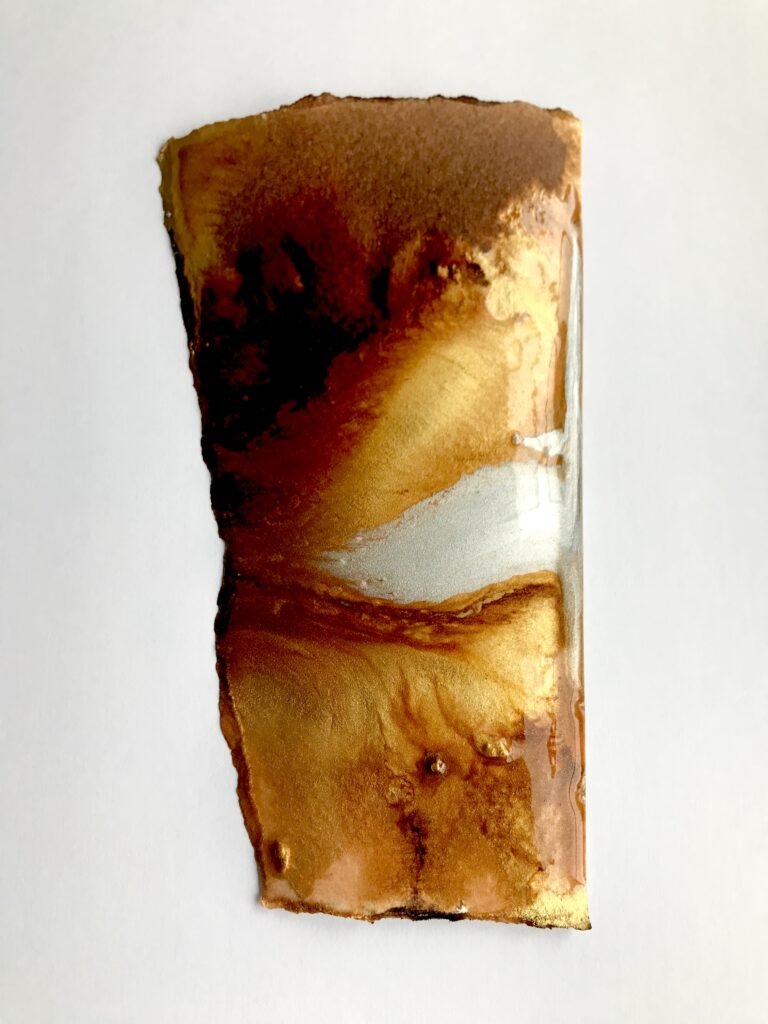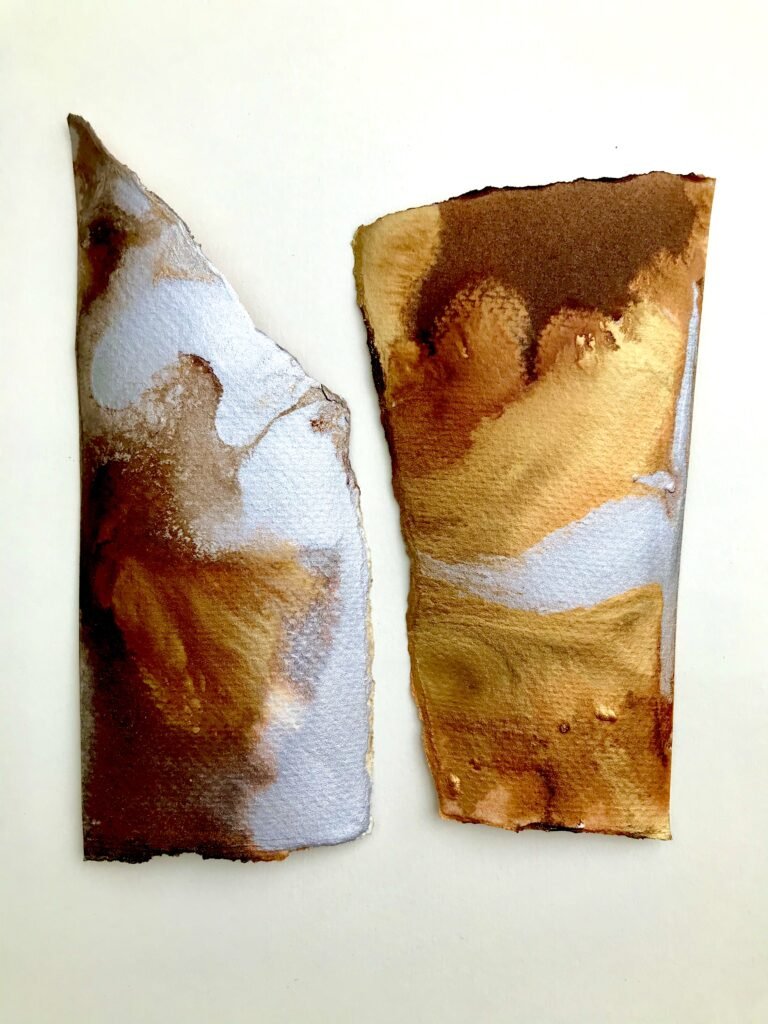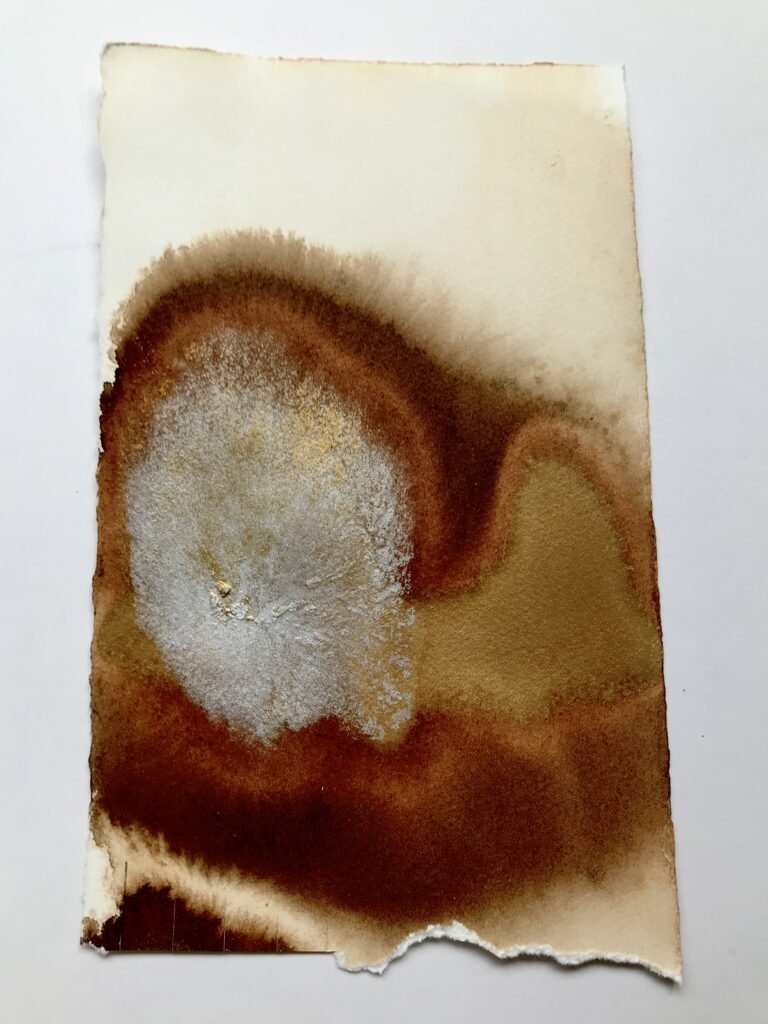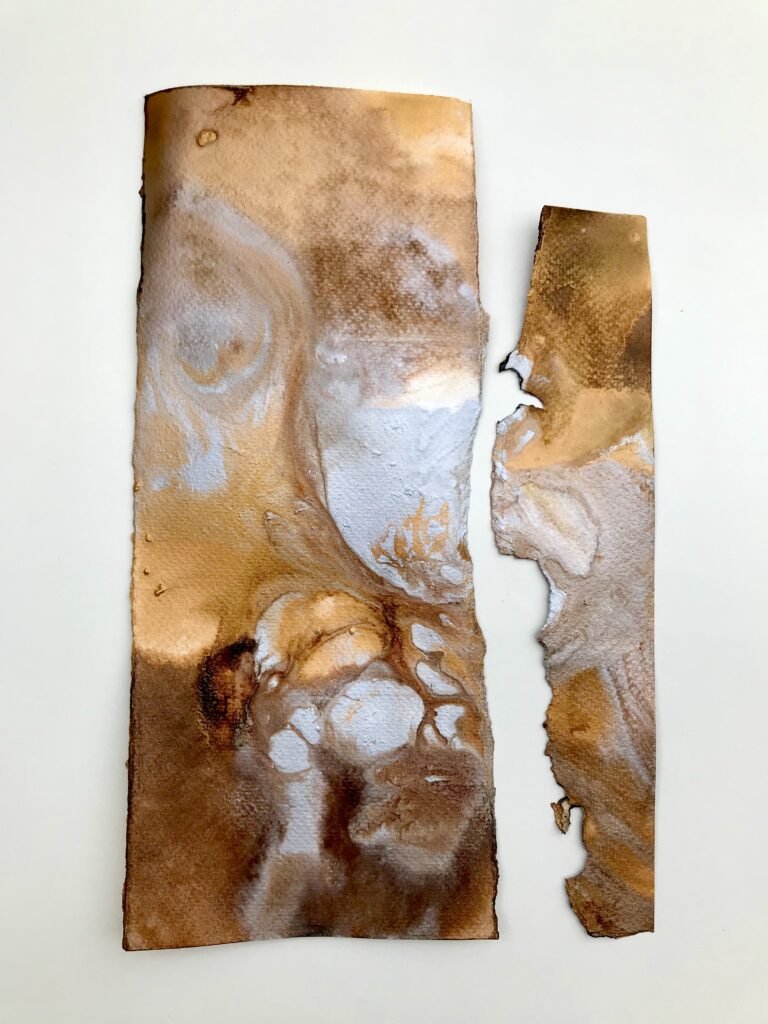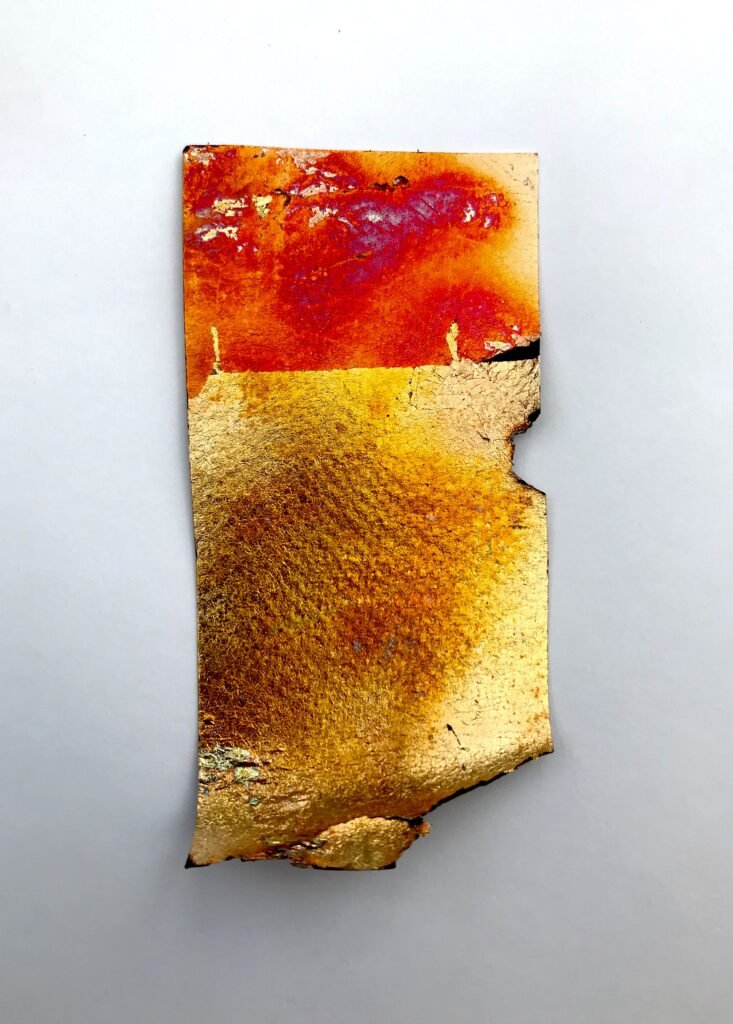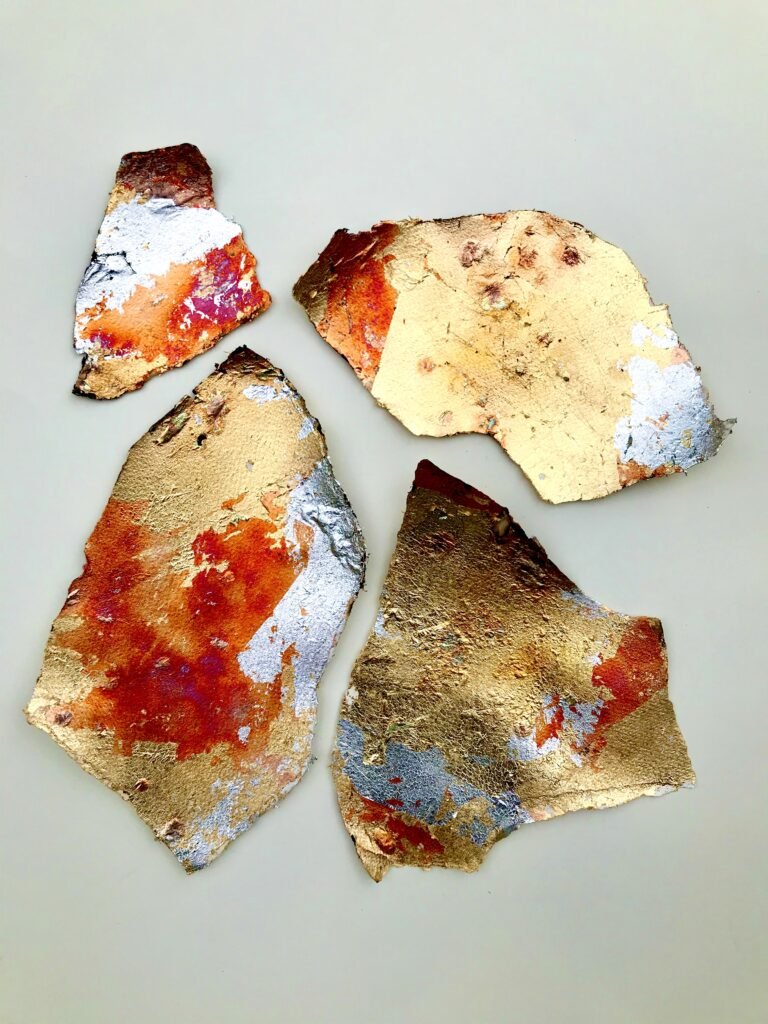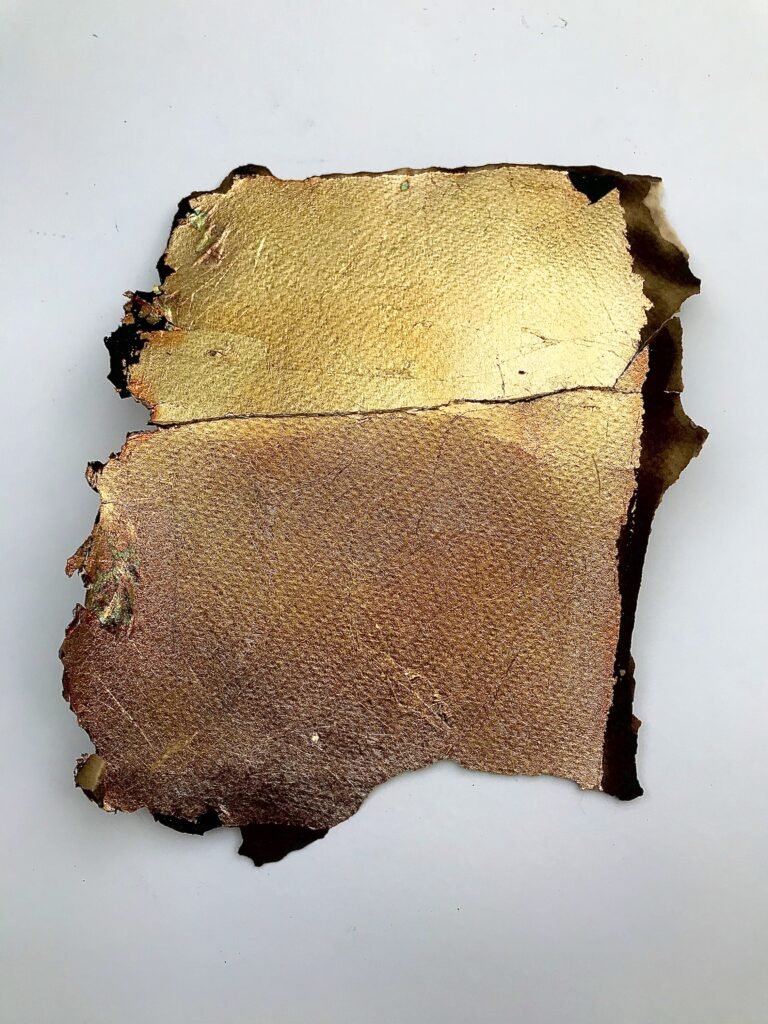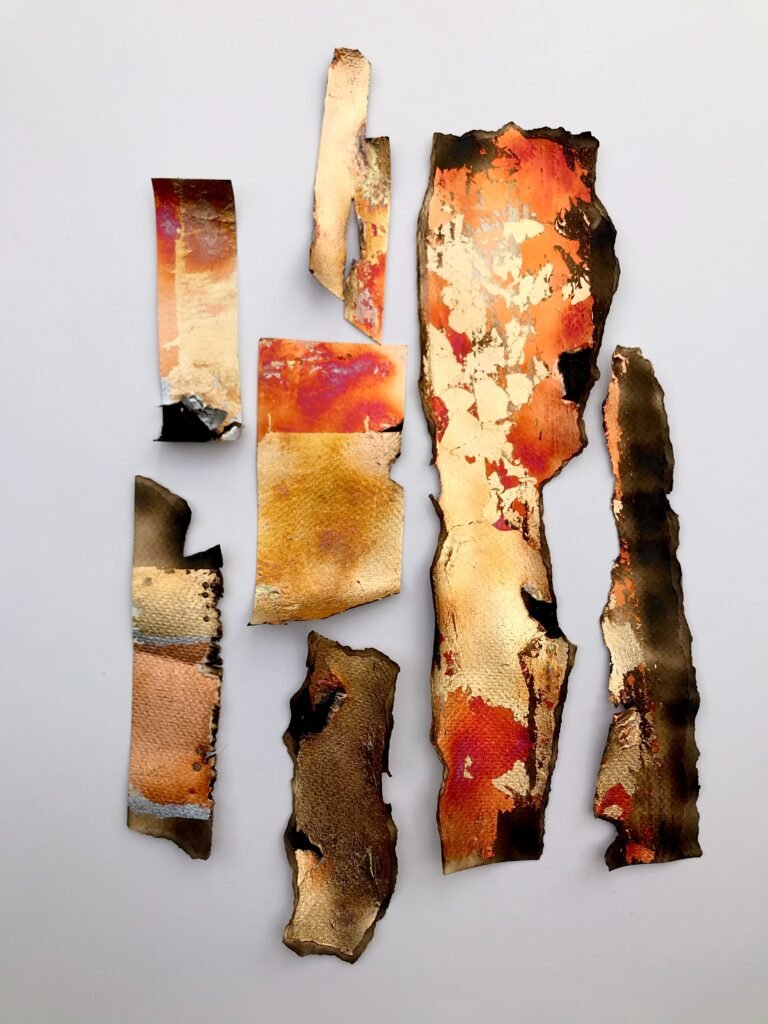Although I have a small (A4 wide) XCut XPress as a printing press at home, and have managed to produce some interesting prints, the lack of access to the large printing press at Lincoln Uni has been a challenge.
However, instead of dwelling on what I can’t do, I have used the extra time to experiment with materials, including metallics. In previous experiments, I have used a pipette to drop metallic acrylic and calligraphy inks onto pieces of thick, dampened printing paper, and they would spread and merge in interesting and sometimes quite beautiful ways. It also started me thinking on the possibilities of these pieces as end products themselves. They also had the potential to become chine collé elements in print projects.
Additionally, these pieces would give me the option of increasing the size of an individual work way beyond the size restriction of even the large etching press at Lincoln Uni. Also, these experiments and other recent projects – such as my Flexure project – has made me question the idea that press and a print could be the only end product of my practice.

Above: metallic acrylic ink on textured printmaking paper
More recently, I have been looking at different ways of introducing metallics into my work. I remembered how interesting the effects of burning with a blowtorch had been in singeing adhesive tapes on plates last year, and wondered what might happen if applied directly to the surface of metal leaf. I began by glueing metal leaf directly to some textured printing paper, set up a workbench and heat shield in my garden and grabbed a blowtorch.
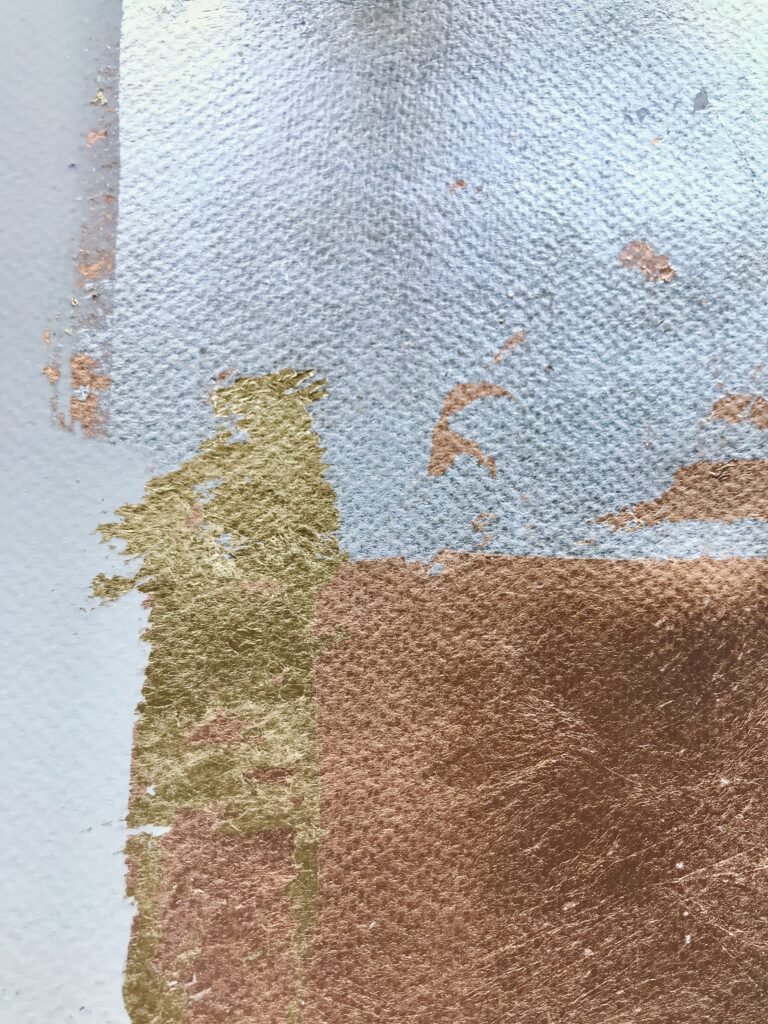
Above: metal leaf glued directly to printing paper
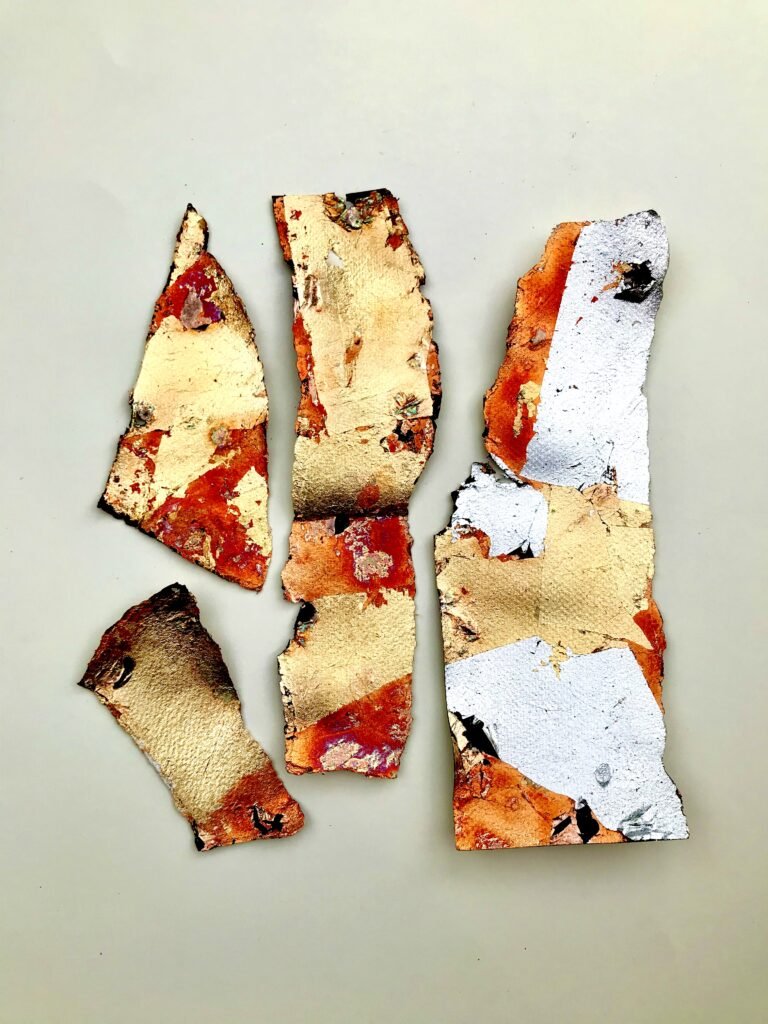 Above and below: paper pieces with metal leaf after heat was applied with a blowtorch
Above and below: paper pieces with metal leaf after heat was applied with a blowtorch
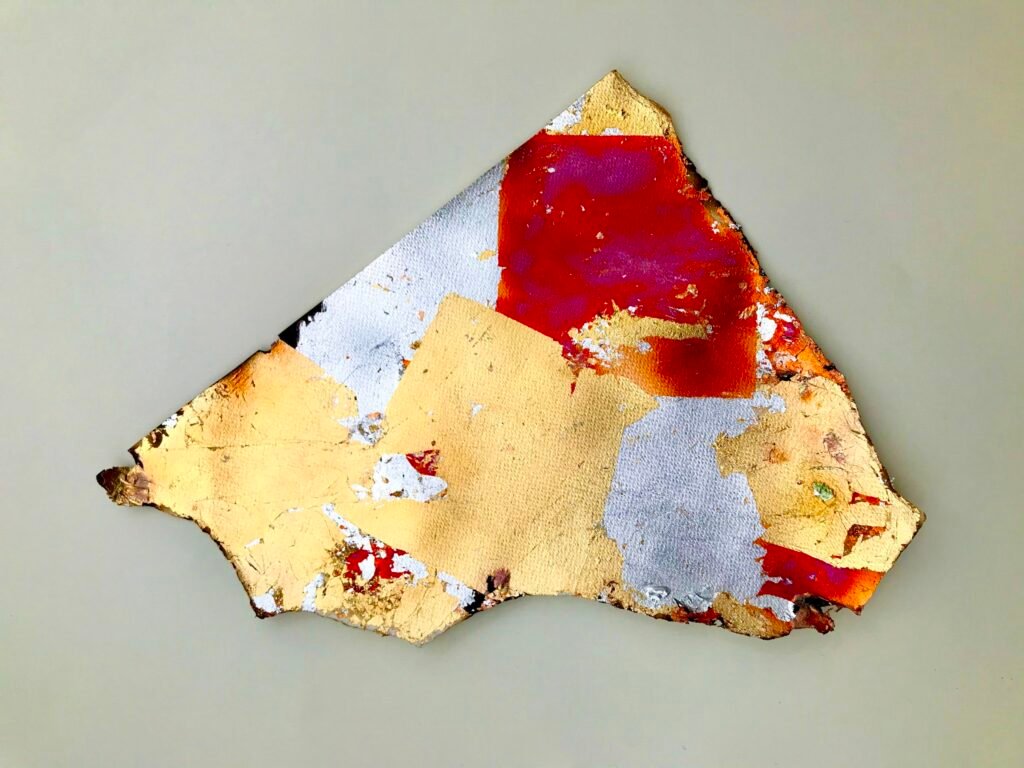
The results were unexpected and quite beautiful. The heat of the blowtorch of course singed the surface of the paper. Additionally though, the heat caused the metal leaf to change texture and tone. In particular, there may have been something in the chemical composition of the copper variety that reacted to the heat. It became iridescent and changed colour into deep, saturated glowing tones of pink and orange.
Immediately, I began to see the potential of these fragments; that they could be used individually or grouped together to form larger pieces, all with the possibility of becoming pieces of art pieces – none of them having having gone through a press. Having said that, some of the smaller fragments still had the potential to work as chine collé elements in other works.

